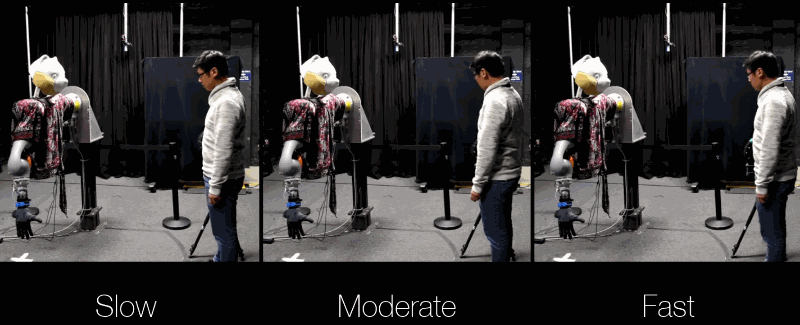INSUBCONTINENT EXCLUSIVE:
Robotic arms can move fast enough to snatch thrown objects right out of the air… but should they? Not unless you want them to unnerve the
humans they&re interacting with, according to work out of Disney Research
Roboticists there found that slowing a robot reaction time made it feel more normal to people.
Disney has, of course, been interested in
robotics for decades, and the automatons in its theme parks are among the most famous robots in the world
But there are few opportunities for those robots to interact directly with people
Hence a series of research projects at its research division aimed at safe and non-weird robot-human coexistence.
In this case the question
was how to make handing over an item to a robot feel natural and non-threatening
Obviously if, when you reached out with a ticket or empty cup, the robot moved like lightning and snapped it out of your hands, that could
be seen as potentially dangerous, or at the very least make people nervous.
Researchers Teach A Robot To Catch Flying Objects Like Yogi
Berra
So the robot arm in this case (attached to an anthropomorphic cat torso) moves at a normal human speed
But there also the question of when it should reach out
After all, it takes us humans a second to realize that someone is handing something to us, then to reach out and grab it
A computer vision system might be able to track an object and send the hand after it more quickly, but it might feel strange.
The
researchers set up an experiment where the robot hand reached out to take a ring from a person under three conditions each of speed and
delay.
When the hand itself moved quickly, people reported less &warmth& and more &discomfort.& The slow speed performed best on those
And when the hand moved with no delay, it left people similarly uneasy
But interestingly, too long a delay had a similar effect.
Turns out there a happy medium that matches what people seem to expect from a hand
reaching out to take something from them
Slower movement is better, to a certain point one imagines, and a reasonable but not sluggish delay makes it feel more human.
The handover
system detailed in a paper published today (and video below) is robust against the usual circumstances: moving targets, unexpected forces
It&ll be a while before an Aristocats bot takes your mug from you at a Disney World cafe, but at least you can be sure it won&t snatch it
faster than the eye can follow and scare everyone around you.

